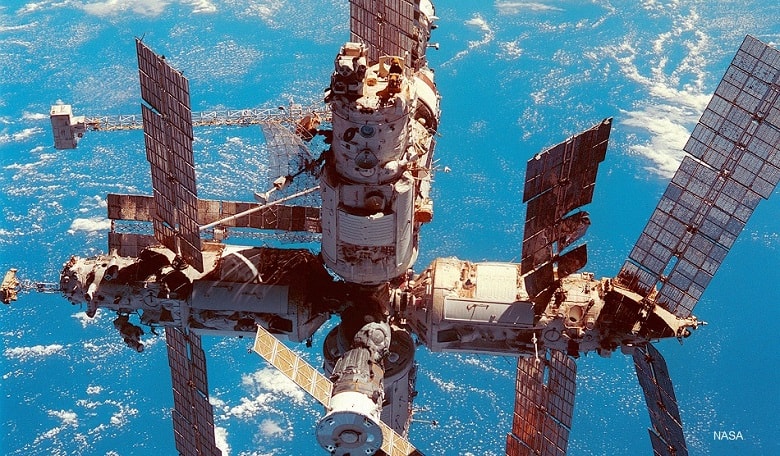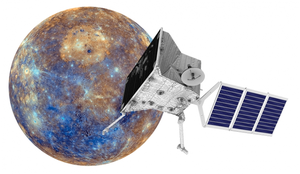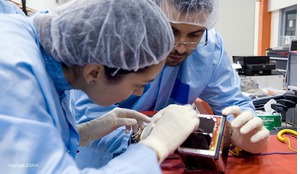Investments in space capability face increasing risk from space debris collision. This is a global problem, but Australia is more dependent on investments in space capability than most other nations, due to its large area, dispersed resources and small population.
In 1997 Australian researchers published the first orbital data for space debris obtained from laser tracking. Since then novel optical tracking technologies have been developed with the objective of generating inexpensive orbital data for all space debris. Over the past 18 years the debris effort was developed through close collaborations between government and industry. Key developments were enabled by investment through a Public Private Partnership (PPP) funding structure.
SERC has research efforts in Japan and the USA, but the research is principally performed in Australia
In 2012 it was proposed that the research elements of the Australian space debris program be separated from commercial debris operations, and combined with the research efforts of other countries through a Cooperative Research Centre (“CRC”) for Space Environment Management. The CRC is a long-standing model for joint public-private investment in applied research.
The CRC incorporated in 2014 as the Space Environment Research Centre Limited (SERC) and brings together, for the first time, leading debris mitigation programs from around the world to create a team with a critical mass of researchers, technology, funding and equipment.
The CRC was established with Australian government funding of AUD$20 million and AUD$40 million of other contributions from six entities in Australia, USA and Japan. This new funding of AUD$60 million over five years will complement AUD$90 million of new research infrastructure which has been made available for CRC research by The Australian National University [Australia], RMIT University [Australia], EOS Space Systems [Australia], Lockheed Martin [USA], Optus [Australia], National Institute of Information and Communications Technology [Japan].
SERC has research efforts in Japan and the USA, but the research is principally performed in Australia where government-university-industry programs have led to many breakthroughs in space debris detection and tracking over the past decade. The maturity of this tracking technology and the existing investment in new space research infrastructure were key reasons why this international program was based in Australia.
Limiting collisions in space
Space debris damage to the Space Shuttle Endeavour
SERC is implementing a staged approach to limit and ultimately eliminate collisions in space.
1. Slow the rate of debris proliferation. New technology in developing accurate debris orbits will support collision-avoidance manoeuvres. By reducing collisions the generation of debris will be slowed, buying time for debris removal technology to be developed.
2. Remove the debris from space. Remote manoeuvre of space objects from the earth is feasible and SERC aims to move debris into safe orbits, or even to de-orbit, using high powered lasers. The participants have already individually achieved key milestones towards this goal, but a joint approach offers the best prospect of early success.
The CRC is funded to 30 June 2019, and because the research co-opts existing programs, it has strong momentum already.
In recognition that preserving the space environment will require ever more innovative solutions as new challenges erupt, the CRC has a strong focus on, and dedicated investment in, educating and training the next generation of space scientists, and on building robust and sustainable links between participating countries and institutions.
How SERC differs from USAF
In common with all other responsible users of space, the US seeks to protect and preserve the space environment. The primary mission of the USAF is serving the national security interests of the US but, consistent with this mission, the USAF usually seeks to leverage its space data for space environment protection. This policy results in a vast amount of space debris data flowing into the public domain, principally through Joint Space Operations Centre (JSpOC).
However, data users cannot rely on the accuracy or timely availability of data made available from JSpOC because it is simply not the primary mission of USAF to provide that data for the global space community. US government policy maintains that space environment protection is a collective international responsibility and the availability of US data is always subject to the operational requirements of its agencies.
SERC tracking technology is entirely based on photonics technologies
Regardless, JSpOC data is of immense value to satellite operators for statistically assessing debris risks and modelling mitigation strategies, because the data effectively represents the debris field at some recent past epoch. However JSpOC data releases are rarely accurate enough to apply directly to collision avoidance manoeuvre operations. These operations require the uncertainty in the debris orbit to be ten times better than typically observed in current JSpOC data.
SERC will not itself generate or provide any data. Commercial proliferation of next-generation space tracking sensors with superior sensitivity and accuracy has already commenced, and the USAF SSN is also undergoing a major upgrade in capacity which will enhance its responsiveness and data accuracy. These two developments will together deliver high quality data for cost-effective collision avoidance operations within five years.
A key difference between SERC and other [e.g. USAF] efforts in this domain is that SERC tracking technology is entirely based on photonics technologies. SERC has a mandate to develop new technology for space debris risk mitigation, in two parallel phases.
In the first phase SERC will attempt to reduce near-term satellite losses and debris growth by:
A improving the quality and accuracy of space debris orbital prediction, absent any improvement in tracking data quantity or accuracy;
B developing customised debris catalogues to allow specific space operators to effect asset management and protection with limited resources;
C individually characterising debris objects to allow longer-term and more accurate prediction of orbits; and
D improving tracking data quantity and/or accuracy by reducing the cost, or improving the performance, of current optical debris tracking systems.
This first phase of activity is information-based and aims to buy time for debris removal technology to mature by slowing the rate of growth of debris. SERC will not be alone in these efforts, and the contributions of other agencies will be required.
A second phase of research aims to re-orbit and ultimately de-orbit certain common types of space debris. SERC will extend its technology for laser tracking of space debris to the use of lasers to interdict space debris immediately prior to a predicted collision. SERC participants have been selected largely on the basis of the know-how, technology and relevant infrastructure they bring to this challenge.
 Advanced Instrumentation & Technology Centre at Mt Stromlo
Advanced Instrumentation & Technology Centre at Mt Stromlo
The initial information phase and the second de-orbit phase of the research uniquely apply the same laser and photonic technology to produce both objectives from the same research effort.
No single solution
In recent years an international consensus formed that no one national government could solve the space debris problem. Some bilateral and multi-lateral space entities had engaged the problem, but bilateral bodies generally lacked critical mass of dedicated resources and technology, and larger multi-lateral bodies generally suffered from too great a diversity of technical options, complex administration and lack of focus.
A key missing element has been the fusion of elite public and private sector resources in the absence of any major government-funded initiative for space debris.
In Australia, excellent space debris research outcomes had emerged over 20 years from a series of PPP between government and industry. These PPP sequentially leveraged significant joint government-industry investment in state-of-the-art infrastructure which was applied by each party for completely different applications and objectives.
SERC is the result of applying Australian PPP experience to design a research organisation
SERC is the result of applying Australian PPP experience to design a research organisation with carefully selected international partners representing both governments and industry. Each participant has a common interest in space debris risk mitigation, but each also brings a unique asset to the PPP in the form of technology, capability or infrastructure. Each participant has made significant recent investments in its own right, reducing the time and funds SERC requires to make inroads, provided SERC quickly and seamlessly integrates those separate investments.
SERC participation was initially limited to six entities, to expedite unanimous agreement on the complex arrangements required for establishment. Future annual intakes of one to two new participants are planned, with the original criteria for membership still applying.
SERC is a not-for-profit entity which is controlled by an independent board and managed as a commercial enterprise. SERC-developed technology is licensed on the open market, with commercial advantages for access provided to participants in proportion to their contributions to funding. Government and industry funding are equal in all respects.
This PPP model is especially suited to risk sharing between government[s] and industry, or where public policy and commercial interest overlap. It appears particularly suited to the space sector because of the high cost and high risk associated with many space activities.
Spin-off technologies
SERC will rapidly achieve critical mass by aggregating research efforts injected by its participants. SERC will not itself exploit its research outputs, but will license them to participants or other entities.
SERC expects its technology to be applied:
– To provide improved space asset management, through improved orbital propagation technology.
– To reduce the cost and improve the quality of space debris tracking data.
– To provide high precision space debris collision avoidance services.
– To provide services relating to the removal of space debris from specific orbits, or prior to a predicted collision.
– To provide technology required for conducting detailed surveys and for characterising space debris objects for later study, relocation or removal.
– For re-orbiting certain types of spacecraft.














